Search
- Page Path
-
- HOME
- Search
- Original Article
- Genetics and Metabolism
- Long-term follow-up of neurocognitive function in patients with citrin deficiency and cholestasis
- Meng-Ju Melody Tsai, Jung-Chi Chang, Heng-Yu Lu, Susan Shur-Fen Gau, Yin-Hsiu Chien, Wuh-Liang Hwu, Yen-Hsuan Ni, Huey-Ling Chen, Ni-Chung Lee
- Clin Exp Pediatr. 2025;68(3):257-265. Published online November 28, 2024
-
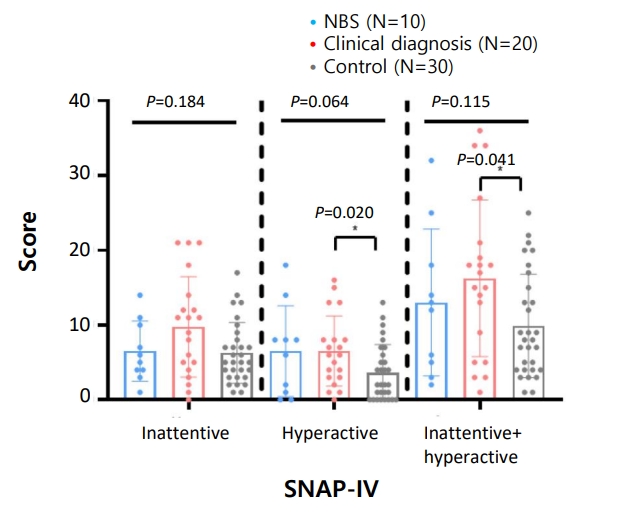
Question: Do transient metabolic disturbances in early childhood due to citrin deficiency have lasting effects on neurocognitive function?
Finding: Children with citrin deficiency have a higher prevalence of ADHD compared to the general population, with elevated ammonia levels in infancy associated with increased hyperactivity-impulsivity risk.
Meaning: Metabolic disturbances in early childhood due to citrin deficiency may contribute to long-term neurocognitive impacts, particularly ADHD, while IQ and life outcomes generally remain normal.
- Infection
- Carbapenem resistance in gram-negative pathogens in an Iranian hospital: high prevalence of OXA-type carbapenemase genes
- Setareh Mamishi, Reihaneh Hosseinpour Sadeghi, Sadaf Sajedi Moghaddam, Babak Pourakbari, Shiva Poormohammadi, Maryam Sotoudeh Anvari, Shima Mahmoudi
- Clin Exp Pediatr. 2025;68(1):65-72. Published online October 31, 2024
-

Question: What is the prevalence of carbapenem resistance in gram-negative bacteria and associated carbapenemase genes?
Findings: This study identified a notable prevalence of carbapenem-resistant gram-negative isolates, with Escherichia coli being the predominant contributor, follow ed by Klebsiella pneumoniae, Acinetobacter baumannii, while bla OXA48 was the most prevalent carbapenemase gene.
Meaning: These findings highlight the urgent need for proactive measures including the rapid detection of carbapenemase- producing isolates and effective infection control.
- Endocrinology
- Correlation between total air pollutant emissions and incidence of type 1 diabetes in the Russian Federation
- Hoon Sung Choi, Jin Taek Kim, Ji-Young Seo, Faina Linkov, Evgeniy Shubnikov, Hong Kyu Lee
- Clin Exp Pediatr. 2021;64(10):525-530. Published online January 18, 2021
-
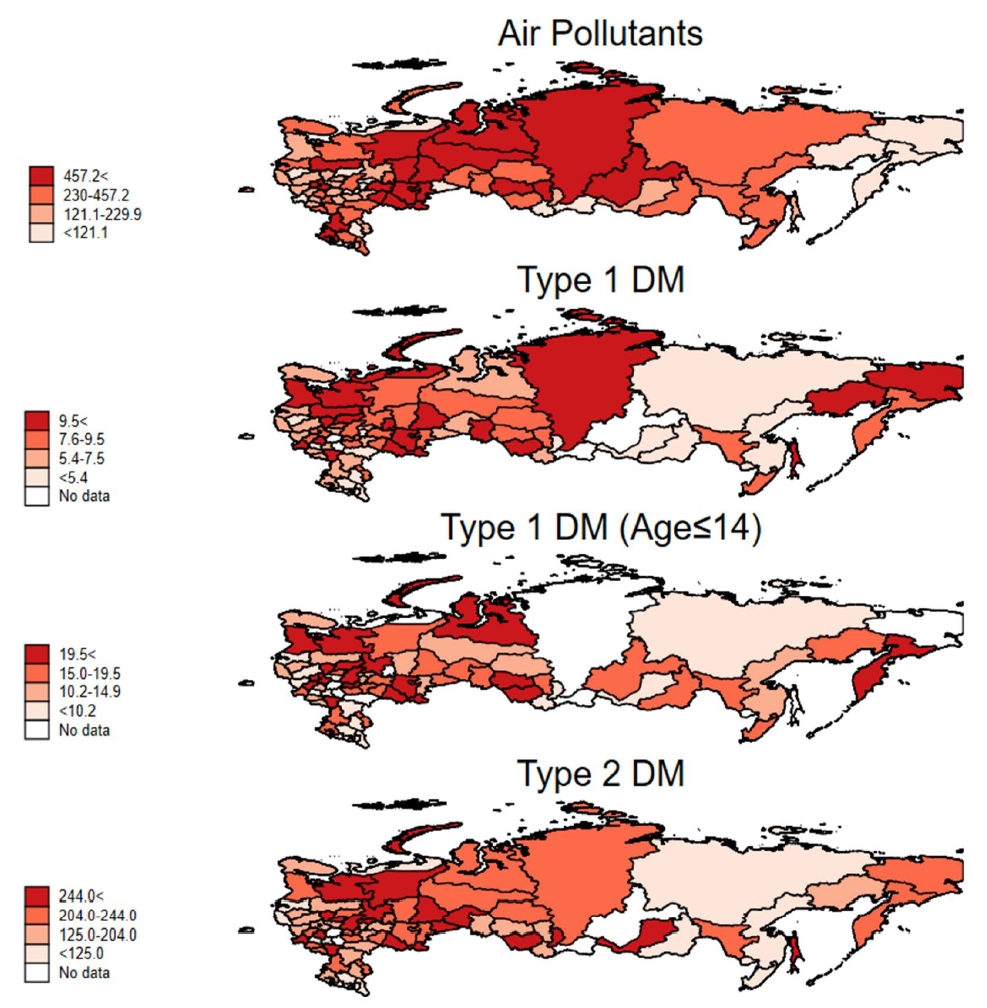
Question: Is there a quantitative relationship between air pollutant emissions and the incidence of type 1 diabetes (T1D)?
Finding: The incidence of T1D in each region of the Russian Federation correlated with the total air pollutants emitted each year.
Meaning: These findings suggest that air pollution contributes to the development of T1D.
- Zinc transporter 8 autoantibody in the diagnosis of type 1 diabetes in children
- Nur Rochmah, Muhammad Faizi, Siti Wahyu Windarti
- Clin Exp Pediatr. 2020;63(10):402-405. Published online October 6, 2020
-

Question: Can zinc transporter 8 autoantibody (ZnT8A) be used for diagnosing type 1 diabetes (T1D)?
Finding: Twenty-two of 30 subjects with type 1 diabetes (73.3 %) were positive for ZnT8A compared to 5 of 18 controls (27.8%).
Meaning: ZnT8A has potential for clinical applications in the diagnosis of T1D.
- Review Article
- Genetics and Metabolism
- Neurofibromatosis type I: points to be considered by general pediatricians
- Eungu Kang, Hee Mang Yoon, Beom Hee Lee
- Clin Exp Pediatr. 2021;64(4):149-156. Published online July 15, 2020
-
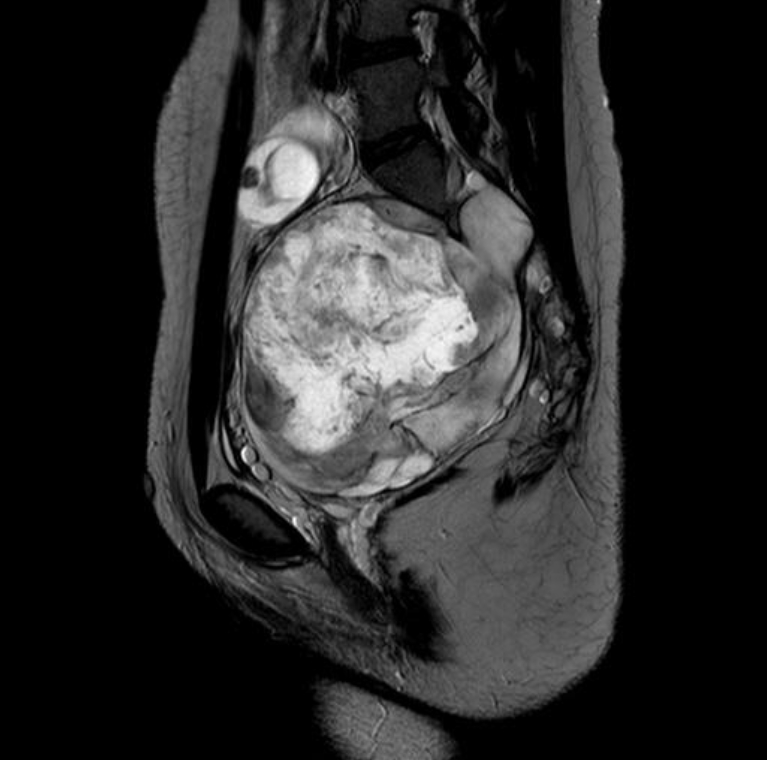
Neurofibromatosis type 1 (NF1), a prevalent genetic disease that is transmitted in an autosomal dominant manner, is characterized by multiple cutaneous café-au-lait spots and neurofibromas as well as various degrees of neurological, skeletal, and neoplastic manifestations. The clinical features of NF1 increase in frequency with age, while the clinical diagnosis can remain undetermined in some pediatric patients. Importantly, affected patients...
- Allergy
- Phenotypes of allergic diseases in children and their application in clinical situations
- Eun Lee, Soo-Jong Hong
- Clin Exp Pediatr. 2019;62(9):325-333. Published online April 23, 2019
-
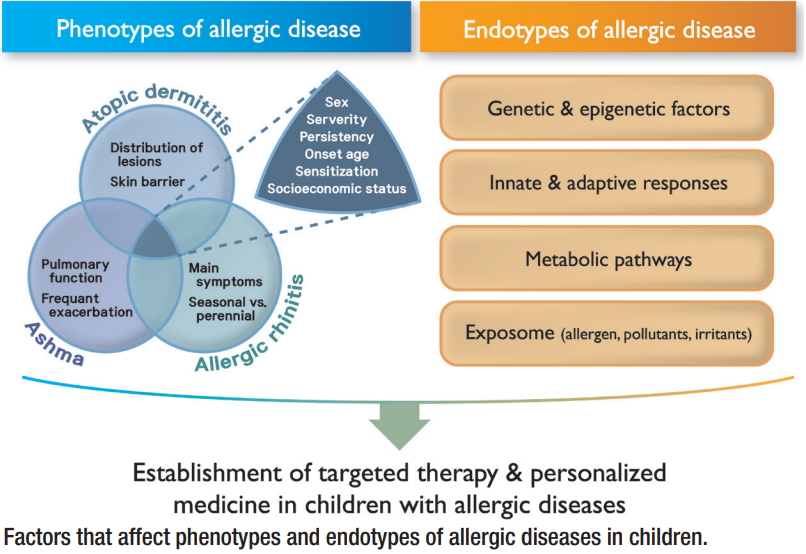
Allergic diseases, including allergic rhinitis, asthma, and atopic dermatitis, are common heterogeneous diseases that encompass diverse phenotypes and different pathogeneses. Phenotype studies of allergic diseases can facilitate the identification of risk factors and their underlying pathophysiology, resulting in the application of more effective treatment, selection of better treatment responses, and prediction of prognosis for each phenotype. In the early phase...
- Case Report
- Nephrology (Genitourinary)
- De novo mutations in COL4A5 identified by whole exome sequencing in 2 girls with Alport syndrome in Korea
- Kyoung Hee Han, Jong Eun Park, Chang-Seok Ki
- Clin Exp Pediatr. 2019;62(5):193-197. Published online November 26, 2018
-
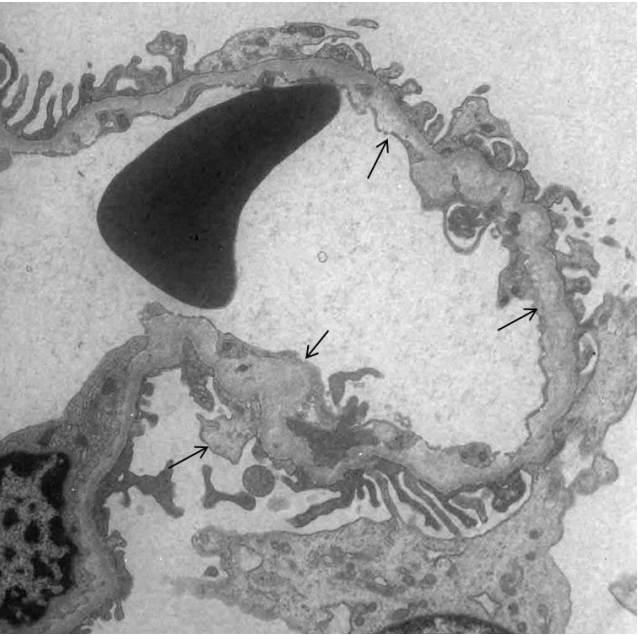
Alport syndrome (ATS) is an inherited glomerular disease caused by mutations in one of the type IV collagen novel chains (α3, α4, and α5). ATS is characterized by persistent microscopic hematuria that starts during infancy, eventually leading to either progressive nephritis or end-stage renal disease. There are 3 known genetic forms of ATS, namely X-linked ATS, autosomal recessive ATS, and...
- Review Article
- Endocrinology
- Understanding of type 1 diabetes mellitus: what we know and where we go
- Chong Kun Cheon
- Clin Exp Pediatr. 2018;61(10):307-314. Published online October 4, 2018
-

The incidence of type 1 diabetes mellitus (T1DM) in children and adolescents is increasing worldwide. Combined effects of genetic and environmental factors cause T1DM, which make it difficult to predict whether an individual will inherit the disease. Due to the level of self-care necessary in T1DM maintenance, it is crucial for pediatric settings to support achieving optimal glucose control, especially...
- Original Article
- Neurology
- Genotype-phenotype correlations in pediatric patients with myotonic dystrophy type 1
- Hyeong Jung Kim, Ji-Hoon Na, Young-Mock Lee
- Clin Exp Pediatr. 2019;62(2):55-61. Published online September 23, 2018
-
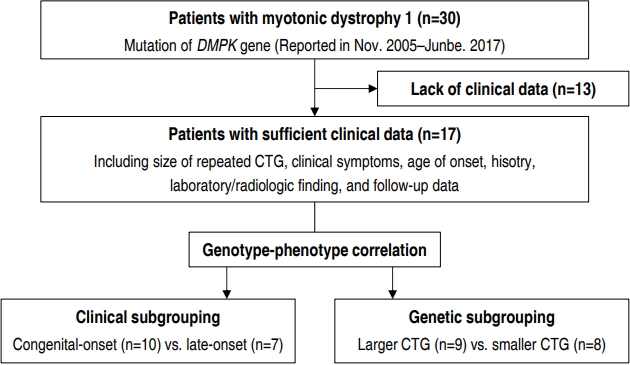
Purpose: Myotonic dystrophy, also known as dystrophia myotonica (DM), is an autosomal dominant disorder with 2 genetically distinct forms. DM type 1 (DM1) is the more common form and is caused by abnormal expansion of cytosine/thymine/guanine (CTG) repeats in the DM protein kinase (DMPK ) gene. Our study aimed to determine whether the age of onset is correlated with CTG...
- Endocrinology
- Autoimmunity and intestinal colonization by Candida albicans in patients with type 1 diabetes at the time of the diagnosis
- Semra Gürsoy, Tuba Koçkar, Sezen Ugan Atik, Zerrin Önal, Hasan Önal, Erdal Adal
- Clin Exp Pediatr. 2018;61(7):217-220. Published online July 15, 2018
-
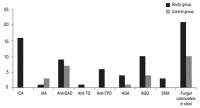
Purpose: Type 1 diabetes mellitus (T1DM) is a chronic and immune-mediated disease, which is characterized by the progressive destruction of pancreatic beta cells. T1DM precipitates in genetically susceptible individuals through environmental factors. In this study, we aimed to evaluate the impact of autoimmunity and intestinal colonization of Candida albicans on the development of T1DM. Methods: Forty-two patients newly diagnosed with T1DM...
- Neonatology (Perinatology)
- Individualized ibuprofen treatment using serial B-type natriuretic peptide measurement for symptomatic patent ductus arteriosus in very preterm infants
- Jeonghee Shin, Eun Hee Lee, Jee Hyun Lee, Byung Min Choi, Young Sook Hong
- Clin Exp Pediatr. 2017;60(6):175-180. Published online June 22, 2017
-
Purpose Plasma level of B-type natriuretic peptide (BNP), an emerging, sensitive, and specific biomarker of hemodynamically significant patent ductus arteriosus (PDA), rapidly decreases in infants receiving cyclooxygenase inhibitors for ductal closure. We investigated the usefulness of serial BNP measurement as a guide for individual identification of early constrictive responses to ibuprofen in preterm infants with symptomatic PDA (sPDA).
Methods Before March 2010, the...
- Case Report
- Neurology
- Type I Chiari malformation presenting orthostatic syncope who treated with decompressive surgery
- Hyun-Seung Shin, Jeong A Kim, Dong-Seok Kim, Joon Soo Lee
- Clin Exp Pediatr. 2016;59(Suppl 1):S149-S151. Published online November 30, 2016
-
Chiari malformations are a congenital anomaly of the hindbrain. The most common, Chiari malformation type I (CM-I), is characterized by herniation of the cerebellar tonsils extending at least 3 mm below the plane of the foramen magnum. Consequently, CM-I is associated with hydrocephalus and symptoms involving compression of the cervicomedullary junction by ectopic tonsils. Several studies have reported the clinical...
- Oncology
- Esthesioneuroblastoma in a boy with 47, XYY karyotype
- Hee Cheol Jo, Seong Wook Lee, Hyun Joo Jung, Jun Eun Park
- Clin Exp Pediatr. 2016;59(Suppl 1):S92-S95. Published online November 30, 2016
-
Neuroblastomas are sometimes associated with abnormal constitutional karyotypes, but the XYY karyotype has been rarely described in neuroblastomas. Here, we report a case of an esthesioneuroblastoma in a boy with a 47, XYY karyotype. A 6-year-old boy was admitted to our hospital because of nasal obstruction and palpable cervical lymph node, which he first noticed several days previously. A polypoid...
- Original Article
- Cardiology
- Correlation of B-type natriuretic peptide levels and echocardiographic parameters in preterm infants with patent ductus arteriosus
- Hyun Ah Jeong, Jeonghee Shin, Eunji Kim, Eun Hee Lee, Byung Min Choi, Chang Sung Son, Joo Won Lee
- Clin Exp Pediatr. 2016;59(4):183-189. Published online April 30, 2016
-
Purpose This study aimed to evaluate the correlation, according to postnatal age, between plasma B-type natriuretic peptide (BNP) levels and echocardiographic parameters for the assessment of patent ductus arteriosus (PDA) in preterm infants with respiratory distress.
Methods We enrolled 42 preterm infants with respiratory distress who underwent serial echocardiographic evaluation with simultaneous plasma BNP measurements until ductal closure. The correlations between BNP levels...
- Case Report
- Hepatic glycogenosis in type 1 diabetes mellitus mimicking Mauriac syndrome
- In Ah Jung, Won Kyoung Cho, Yeon Jin Jeon, Shin Hee Kim, Kyoung Soon Cho, So Hyun Park, Min Ho Jung, Byung-Kyu Suh
- Clin Exp Pediatr. 2015;58(6):234-237. Published online June 22, 2015
-
Hepatic glycogenosis in type 1 diabetes mellitus (DM) can be caused by poor glycemic control due to insulin deficiency, excessive insulin treatment for diabetic ketoacidosis, or excessive glucose administration to control hypoglycemia. Mauriac syndrome, which is characterized by hepatomegaly due to hepatic glycogenosis, growth retardation, delayed puberty, and Cushingoid features, is a rare diabetic complication. We report a case of...
- Original Article
- The relationship between primary headache and constipation in children and adolescents
- Mi-Na Park, Min-Gyu Choi, Su Jeong You
- Clin Exp Pediatr. 2015;58(2):60-63. Published online February 28, 2015
-
Purpose Many patients presenting with headache also complain of constipation; the relationship between these two symptoms has not been explored in detail. The aim of this study was to investigate the association between primary headache and constipation.
Methods This retrospective study included all children who attended the Inje University Sanggye Paik Hospital complaining of headache, and who had been followed up for at...
- Case Report
- Identification of a novel mutation in a patient with pseudohypoparathyroidism type Ia
- Ye Seung Lee, Hui Kwon Kim, Hye Rim Kim, Jong Yoon Lee, Joong Wan Choi, Eun Ju Bae, Phil Soo Oh, Won Il Park, Chang Seok Ki, Hong Jin Lee
- Clin Exp Pediatr. 2014;57(5):240-244. Published online May 31, 2014
-
Pseudohypoparathyroidism type Ia (PHP Ia) is a disorder characterized by multiform hormonal resistance including parathyroid hormone (PTH) resistance and Albright hereditary osteodystrophy (AHO). It is caused by heterozygous inactivating mutations within the Gs alpha-encoding GNAS exons. A 9-year-old boy presented with clinical and laboratory abnormalities including hypocalcemia, hyperphosphatemia, PTH resistance, multihormone resistance and AHO (round face, short stature, obesity, brachydactyly...
- Review Article
- Association of wheezing phenotypes with fractional exhaled nitric oxide in children
- Jung Yeon Shim
- Clin Exp Pediatr. 2014;57(5):211-216. Published online May 31, 2014
-
Asthma comprises a heterogeneous group of disorders characterized by airway inflammation, airway obstruction, and airway hyperresponsiveness (AHR). Airway inflammation, which induces AHR and recurrence of asthma, is the main pathophysiology of asthma. The fractional exhaled nitric oxide (FeNO) level is a noninvasive, reproducible measurement of eosinophilic airway inflammation that is easy to perform in young children. As airway inflammation precedes...
- Case Report
- Griscelli syndrome type 2: a novel mutation in
RAB27A gene with different clinical features in 2 siblings: a diagnostic conundrum - Kirtisudha Mishra, Shilpy Singla, Suvasini Sharma, Renu Saxena, Vineeta Vijay Batra
- Clin Exp Pediatr. 2014;57(2):91-95. Published online February 24, 2014
-
Griscelli syndrome type 2 (GS2) is a rare autosomal recessive disease caused by mutations in the
RAB27A gene. It is characterized by cutaneous hypopigmentation, immunodeficiency, and hemophagocytic lymphohistiocytosis. We describe 2 brothers who had GS2 with clinically diverse manifestations. The elder brother presented with a purely neurological picture, whereas the younger one presented with fever, pancytopenia, hepatosplenomegaly, and erythema nodosum....
- Review Article
- Prevalence of rotavirus genotypes in South Korea in 1989-2009: implications for a nationwide rotavirus vaccine program
- Van Thai Than, Wonyong Kim
- Clin Exp Pediatr. 2013;56(11):465-473. Published online November 27, 2013
-
The epidemiology of human group A rotavirus was analyzed by examining genotypic data acquired from 1989 to 2009 in South Korea. This information was derived from all the available published articles on rotavirus studies in South Korea, retrieved from both the PubMed and KoreaMed databases. Four common G types (G1, G2, G3, and G4) and three common P types (P[8],...
- Original Article
- Utility of a multiplex reverse transcriptase-polymerase chain reaction assay (HemaVision) in the evaluation of genetic abnormalities in Korean children with acute leukemia: a single institution study
- Hye-Jin Kim, Hyun Jin Oh, Jae Wook Lee, Pil-Sang Jang, Nack-Gyun Chung, Myungshin Kim, Jihyang Lim, Bin Cho, Hack-Ki Kim
- Clin Exp Pediatr. 2013;56(6):247-253. Published online June 21, 2013
-
Purpose In children with acute leukemia, bone marrow genetic abnormalities (GA) have prognostic significance, and may be the basis for minimal residual disease monitoring. Since April 2007, we have used a multiplex reverse transcriptase-polymerase chain reaction tool (HemaVision) to detect of GA.
Methods In this study, we reviewed the results of HemaVision screening in 270 children with acute leukemia, newly diagnosed at The...
- Case Report
- Two cases of chronic pancreatitis associated with anomalous pancreaticobiliary ductal union and
SPINK1 mutation - Eun Sam Rho, Earl Kim, Hong Koh, Han-Wook Yoo, Beom Hee Lee, Gu-Hwan Kim
- Clin Exp Pediatr. 2013;56(5):227-230. Published online May 28, 2013
-
Chronic pancreatitis is a progressive inflammatory disease resulting from repeated episodes of acute pancreatitis that impair exocrine function and eventually produce endocrine insufficiency. Some causes of chronic pancreatitis appear to be associated with alterations in the serine-protease inhibitor, Kazal type 1 (
SPINK1 ), cationic trypsinogen (PRSS1 ), and cystic fibrosis-transmembrane conductance regulator (CFTR ) genes, or with structural disorders in the pancreaticobiliary ductal...
- Review Article
- Phenotypes and endotypes of severe asthma in children
- Young Yoo
- Clin Exp Pediatr. 2013;56(5):191-195. Published online May 28, 2013
-
Severe childhood asthma is a complicated and heterogeneous disorder with distinct phenotypes. Children with severe asthma have more persistent symptoms despite receiving treatment, more atopy, greater airway obstruction, and more air trapping than those with mild-to-moderate asthma. They also have higher morbidity and substantial airflow limitations that persist throughout adulthood. Identification of the phenotype clusters and endotypes of severe asthma...
- Case Report
- Secondary paroxysmal dyskinesia associated with 2009 H1N1 infection
- Yun Jung Hur, Taegyu Hwang
- Clin Exp Pediatr. 2013;56(1):42-44. Published online January 29, 2013
-
Neurological complications associated with 2009 H1N1 infection in children have been reported and recognized worldwide. The most commonly reported neurological complications are seizures and encephalopathy. Secondary movement disorders are also associated with the infection, but such cases are rarely reported. Here, we describe the case of a 14-year-old boy with paroxysmal kinesigenic dyskinesia secondary to 2009 H1N1 infection, who presented...
- A case of Becker muscular dystrophy with early manifestation of cardiomyopathy
- Ki Hyun Doo, Hye Won Ryu, Seung Soo Kim, Byung Chan Lim, Hui Hwang, Ki Joong Kim, Yong Seung Hwang, Jong-Hee Chae
- Clin Exp Pediatr. 2012;55(9):350-353. Published online September 14, 2012
-
An 18-year-old boy was admitted with chest discomfort, nausea, and dyspnea at rest. At the age of 3 years, he underwent muscle biopsy and dystrophin gene analysis owing to an enlarged calf muscle and elevated serum kinase level (6,378 U/L) without overt weakness; based on the results, Becker muscular dystrophy (BMD) was diagnosed. The dystrophin gene showed deletion of exons...
- Original Article
- A study of the relationship between clinical phenotypes and plasma iduronate-2-sulfatase enzyme activities in Hunter syndrome patients
- Ok Jeong Lee, Su-Jin Kim, Young Bae Sohn, Hyung-Doo Park, Soo-Youn Lee, Chi-Hwa Kim, Ah-Ra Ko, Yeon-Joo Yook, Su-Jin Lee, Sung Won Park, Se-Hwa Kim, Sung-Yoon Cho, Eun-Kyung Kwon, Sun Ju Han, Dong-Kyu Jin
- Clin Exp Pediatr. 2012;55(3):88-92. Published online March 16, 2012
-
Purpose Mucopolysaccharidosis type II (MPS II or Hunter syndrome) is a rare lysosomal storage disorder caused by iduronate-2-sulfatase (IDS) deficiency. MPS II causes a wide phenotypic spectrum of symptoms ranging from mild to severe. IDS activity, which is measured in leukocyte pellets or fibroblasts, was reported to be related to clinical phenotype by Sukegawa-Hayasaka et al. Measurement of residual plasma IDS...
- Review Article
- Epidemiology of astrovirus infection in children
- Hye Sook Jeong, Ahyong Jeong, Doo-Sung Cheon
- Clin Exp Pediatr. 2012;55(3):77-82. Published online March 16, 2012
-
Human astrovirus (HAstV) is a major cause of acute diarrhea among children, resulting in outbreaks of diarrhea and occasionally hospitalization. Improved surveillance and application of sensitive molecular diagnostics have further defined the impact of HAstV infections in children. These studies have shown that HAstV infections are clinically milder (diarrhea, vomiting, fever) than infections with other enteric agents. Among the 8...
- Original Article
- Transforming growth factor beta receptor II polymorphisms are associated with Kawasaki disease
- Yu Mi Choi, Kye Sik Shim, Kyung Lim Yoon, Mi Young Han, Sung Ho Cha, Su Kang Kim, Joo Ho Jung
- Clin Exp Pediatr. 2012;55(1):18-23. Published online January 31, 2012
-
Purpose Transforming growth factor beta receptor 2 (
TGFBR2 ) is a tumor suppressor gene that plays a role in the differentiation of striated cells and remodeling of coronary arteries. Single nucleotide polymorphisms (SNPs) of this gene are associated with Marfan syndrome and sudden death in patients with coronary artery disease. Cardiovascular remodeling and T cell activation ofTGFBR2 gene suggest that the...
- Clinical characteristics of 2009 pandemic influenza A (H1N1) infection in children and the performance of rapid antigen test
- Yong-Jae Park, Jang-Yong Jin, Hyeon-Jong Yang, Woo-Ryung Lee, Dong-Hwan Lee, Bok-Yang Pyun, Eun-Sook Suh
- Clin Exp Pediatr. 2011;54(10):405-408. Published online October 31, 2011
-
Purpose In autumn 2009, the swine-origin influenza A (H1N1) virus spread throughout South Korea. The aims of this study were to determine the clinical characteristics of children infected by the 2009 H1N1 influenza A virus, and to compare the rapid antigen and real-time polymerase chain reaction (PCR) tests.
Methods We conducted a retrospective review of patients ≥18 years of age who presented to...
- Case Report
- A sporadic case of Loeys-Dietz syndrome type I with two novel mutations of the
TGFBR2 gene - Jung Sook Ha, Yeo Hyang Kim
- Clin Exp Pediatr. 2011;54(6):272-275. Published online June 30, 2011
-
A recently recognized connective tissue disorder, Loeys-Dietz syndrome (LDS) is a genetic aortic aneurysm syndrome caused by mutations in the transforming growth factor-receptor type I or II gene (
TGFBR1 orTGFBR2 ). They have distinctive phenotypic abnormalities including widely spaced eyes (hypertelorism), bifid uvula or cleft palate, and arterial tortuosity with aortic aneurysm or dissection throughout the arterial tree. LDS is...
-

-
-
8.02023CiteScore94th percentilePowered by
-
Impact Factor3.2
-
- TOPICS
- ARTICLE CATEGORY
- Editorial Office
-
Korean Pediatric Society
#1606 Seocho World Officetel, 19 Seoun-ro, Seocho-ku, Seoul 06732, Korea
Tel: +82-2-3473-7306 Fax: +82-2-3473-7307 E-mail: office@e-cep.org
Clinical and Experimental Pediatrics is an open access journal. All articles are distributed under the terms of the Creative Commons Attribution NonCommercial License (http://creativecommons.org/licenses/by-nc/4.0/)
Copyright © 2025 by Korean Pediatric Society.











